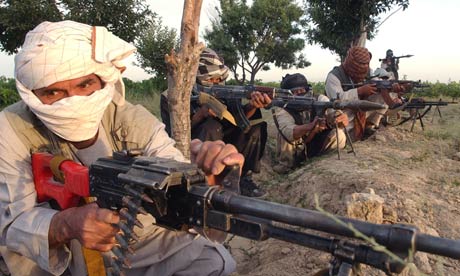Monday 25 April 2011
- Article history

Mullah Abdullah Zakir is around 40 years old, runs insurgent operations in his native province of Helmand in Afghanistan and is reported to have been recently appointed second in command of the Taliban.
He was released from Guantánamo Bay in 2007 after telling authorities at a release hearing: "I want to go back home and join my family and work in my land and help my family."
Zakir, who was one of the first captives to arrive at "Gitmo" in early 2002, is one of the most high-profile former prisoners of the camp to return to violence. He, and perhaps up to 150 others, are now at the centre of a bitter row over recidivism rates among former detainees.
That some of those released have taken up arms is without doubt. The case of Zakir is far from unique. Another released Afghan prisoner, Abdul Rauf Khadim, was recently reported to be a mid-level Taliban commander and rapidly rising through the ranks.
In Saudi Arabia, where authorities run a sophisticated and well-resourced rehabilitation programme for those returning from Guantánamo Bay, figures from last year reveal that 25 out of 120 released detainees brought back to the kingdom from Cuba have been involved in some kind of extremist violence.
One is Said al-Shihri who, after returning home in 2007, became deputy leader of the reinvigorated al-Qaida in the Arabian Peninsula, the group believed responsible for the failed attempt to bring down a passenger jet over Detroit on 25 December 2009. Two Moroccans were convicted in 2007 of recruiting for the terrorist organisation. There are many others.
However, the exact proportion of the nearly 600 former detainees released – mainly to Afghanistan and Saudi Arabia – who now pose a threat is a matter of bitter debate. First there is the question of evidence of their alleged involvement in violence.
A submission by the US director of national intelligence said that, on 1 October last year, of the 598 detainees who had been "transferred out of department of defence custody", the American intelligence community assessed that "81 (13.5%) are confirmed and 69 (11.5%) are suspected of re-engaging in terrorist or insurgent activities". Of these, 13 were believed dead, 54 were back behind bars and 83 were at large.
The statement provoked controversy, with critics arguing that it cited little supporting evidence and that the word "re-engaging"implied that detainees had already engaged in violence when some had been found to be entirely innocent.
Set against Barack Obama's attempts to close Guantánamo Bay, currently stalled in the face of opposition in Congress and the practical difficulties in finding somewhere to send around 60 of the 170 remaining detainees who have been cleared for release, the row has taken on a bitterly political colour.
Intelligence analysts said there was a typical delay of 30 months before a released individual became involved in violence so the numbers are predicted to rise.
Yet independent experts at the New America Foundation thinktank conducted their own investigation and say the official figures are exaggerated. They estimate that in fact only around 6% of former detainees become involved in extremist activities after their release. They also point out that the recidivism rate from standard American prisons is around 60%.
One key question is the role the experience of incarceration in Guantánamo Bay plays in the return to violence. Saudi Arabian government specialists found the rate of recidivism among former detainees was more than twice that of militants who had not been in the US prison.
A secret 2005 Pakistani study of 35 released Guantánamo detainees said that all experienced "extreme feelings of resentment and hatred against the USA".
Speaking to the Guardian in Kabul in 2008, many Afghan former detainees merely professed a desire to live in peace. Others, however, remained angry.
"Osama bin Laden is the only person who is concerned about the plight of the Muslim world," one said. "There is chaos, violence, tyranny [in Afghanistan]. This is enough to make even an ordinary person furious. Imagine how someone who has suffered for years in prison feels."

No comments:
Post a Comment